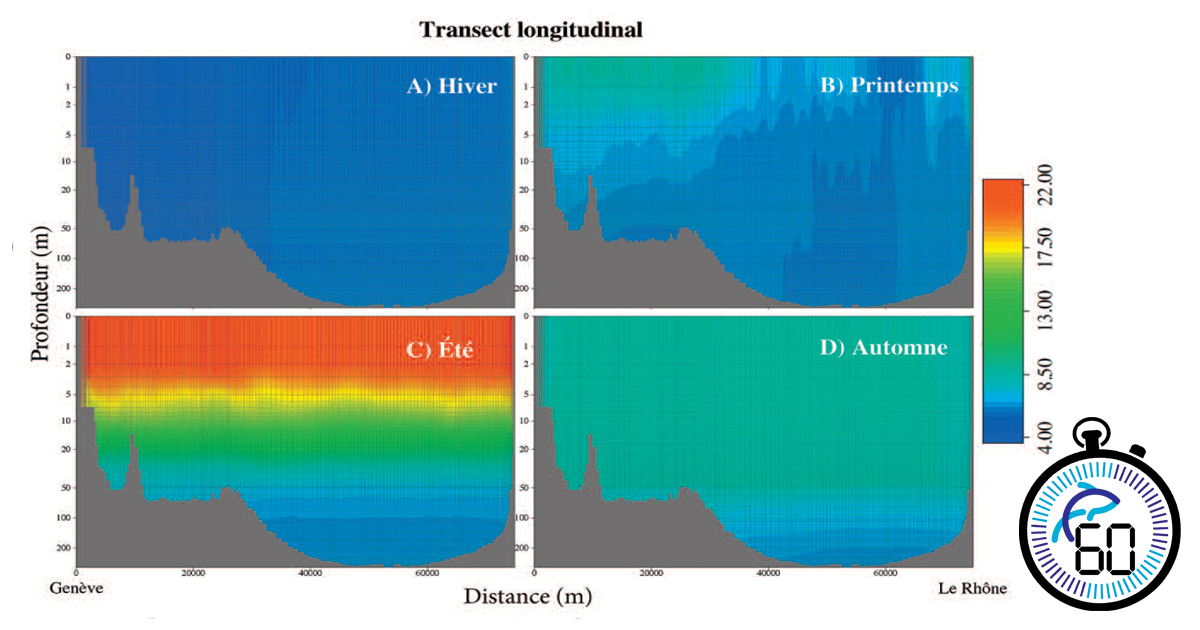What is stratification?
In summer, Lake Geneva, like most Alpine lakes, is stratified into 3 distinct layers. The epilimnion at the surface, the metalimnion in the middle and the hypolimnion in the depths. The epilimnion is the top layer of the lake. This layer is stirred up by the wind and it is in this zone that biological productivity is highest. Its depth varies according to the wind and air temperature. It can range from a few centimetres in early summer to around twenty metres during long hot spells.
Just below the epilimnion is the metalimnion. This is where the thermocline is located, i.e. the point at which the water temperature drops sharply. The significant change in water density (due to temperature) in this layer means that there is little mixing. Finally, the largest layer in terms of size, the hypolimnion, is characterised by water at a stable temperature (4-5°C). During strong gales, this zone is also stirred. The cooler autumn temperatures gradually eliminate the differences between these three layers. The surface water cools, the thermocline becomes more anecdotal and mixing with the upper part of the hypolimnion is possible.
Winter mixing is a natural phenomenon caused by the cooling of surface water. As water cools, its density increases and surface water masses sink to the depths. Wind can accelerate this process. This mixing oxygenates the deep waters. In the absence of oxygen, in addition to the organisms that may be affected, the phosphorus contained in the sediments is more easily released.
In spring, thermal stratification gradually returns and the cycle begins again.
Unfortunately, in recent years the winters have not been cold enough and Lake Geneva is no longer fully stirred. In 2019, only 135 metres of water were stirred. The waters of Lake Geneva have not been fully stirred since 2012. As a result, the current oxygen level at depth is below the requirements of the Swiss Water Protection Ordinance.


